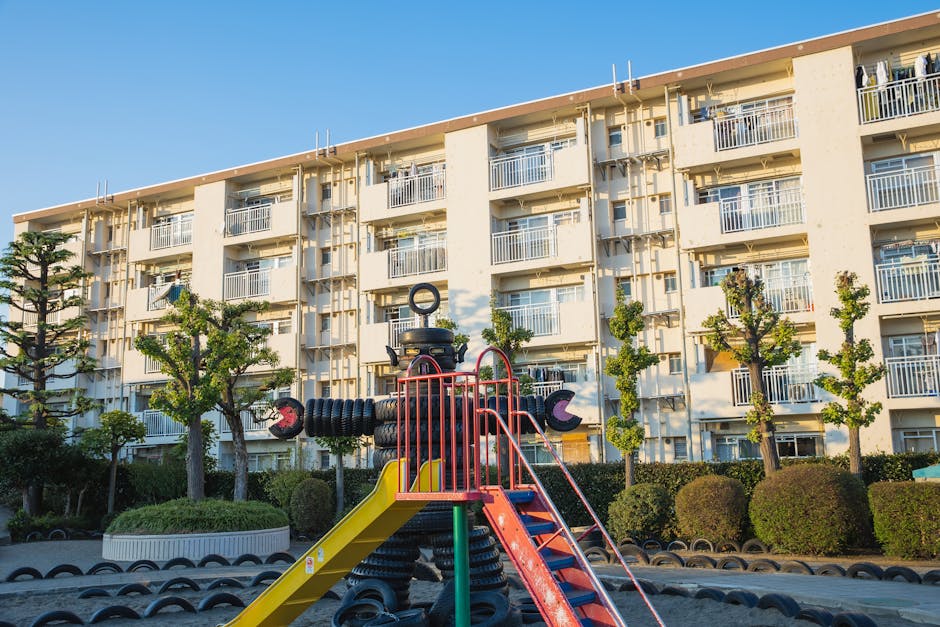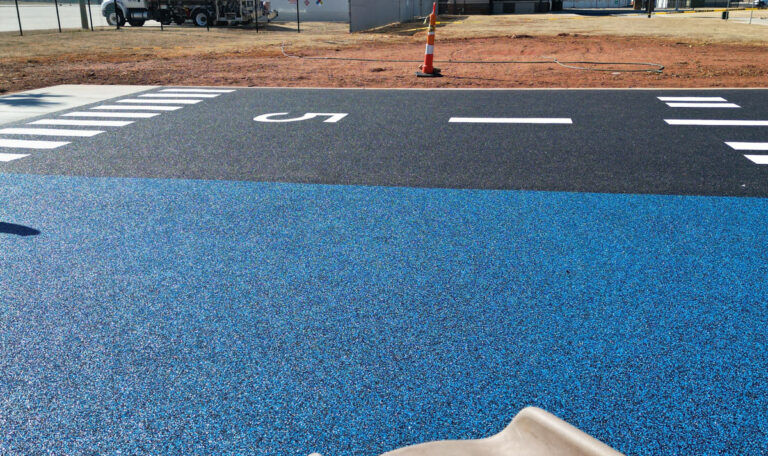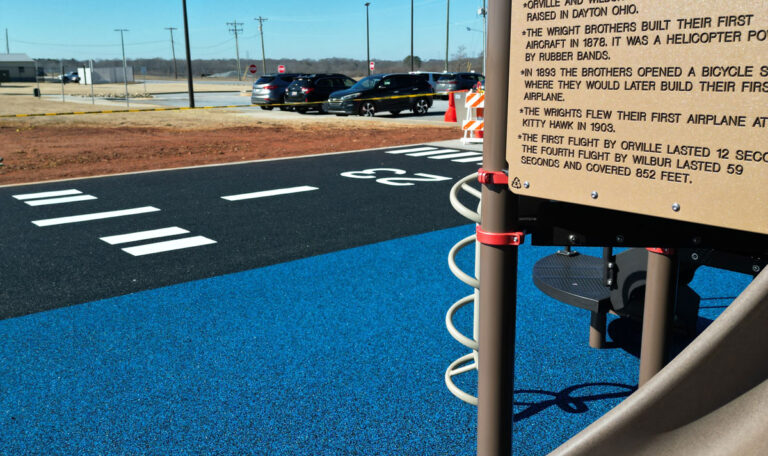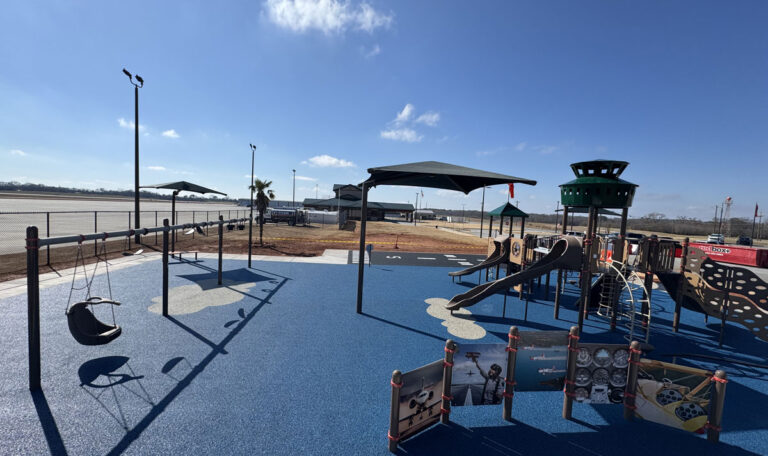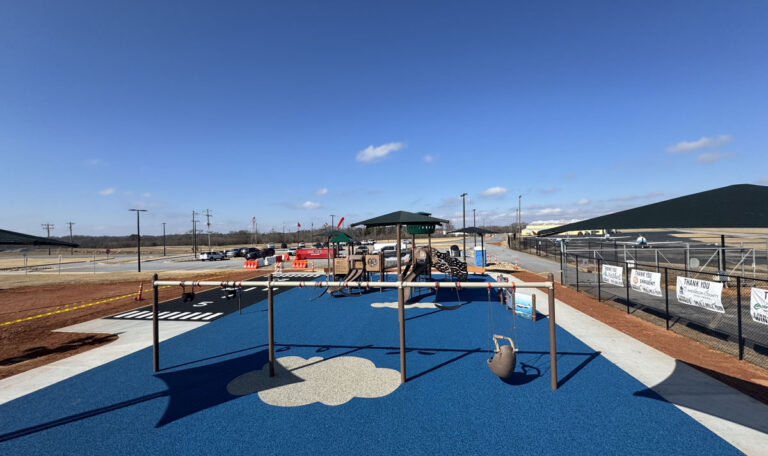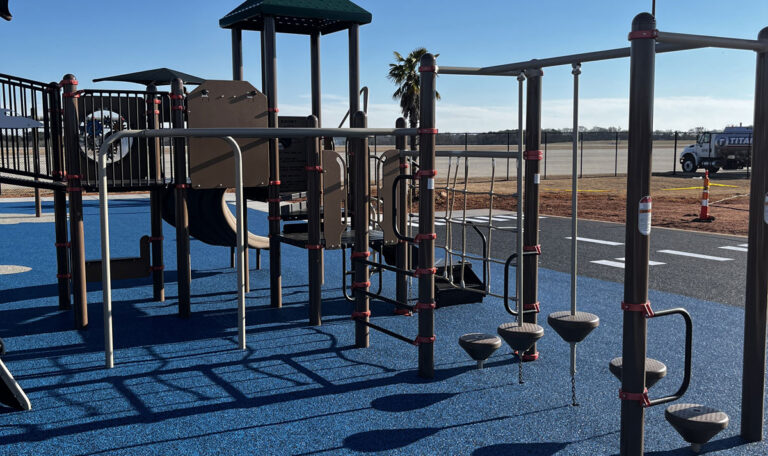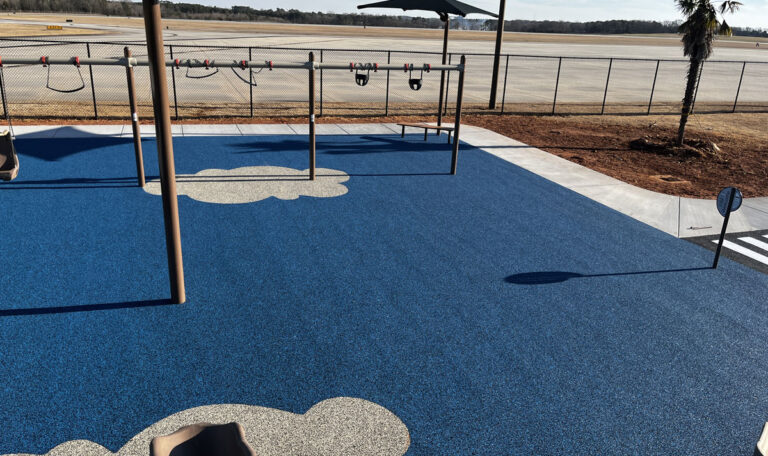Changing Tires into Sustainable Surfaces
Used rubber mulch is recycled tire material that’s been shredded, cleaned, and repurposed as a durable ground cover for playgrounds, landscapes, and other applications. If you’re looking to buy used rubber mulch, here’s what you need to know:
| Quick Facts: Used Rubber Mulch |
|---|
| Material: 100% recycled tires |
| Lifespan: 10-20 years (vs. 1-2 years for wood mulch) |
| Coverage: Up to 2x the coverage of wood mulch |
| Safety: IPEMA certified, meets ASTM standards |
| Applications: Playgrounds, landscaping, horse arenas |
| Benefits: Weed suppression, erosion control, fade-resistant |
Used rubber mulch offers significant advantages over traditional wood mulch. It’s more durable, requires less maintenance, and helps divert waste from landfills. The Environmental Protection Agency reports that approximately 290 million scrap tires are discarded annually in the United States—rubber mulch transforms this waste into a functional product.
Unlike organic mulches that decompose and need regular replacement, used rubber mulch maintains its appearance and functionality for years. It comes in various colors, doesn’t attract pests, and provides excellent shock absorption for playground applications.
However, before making your purchase, it’s important to understand both the benefits and potential concerns associated with this recycled material.
I’m Landon Olson, a mechanical engineer who has worked extensively with recycled materials at Replay Surfacing, where we’ve transformed millions of pounds of scrap tires into used rubber mulch and other sustainable surfacing solutions for playgrounds, sports facilities, and landscaping applications.

Easy used rubber mulch word list:
– loose fill playground surfacing
– playset rubber mat
– installing rubber mulch
What Is Rubber Mulch & How It’s Made
Ever wonder what happens to all those old tires? Used rubber mulch gives them a second life! At Replay Surfacing, we’re passionate about changing what would be landfill waste into something useful that lasts for years.
The journey from tire to mulch involves several steps that ensure you get a clean, safe product:
First, we collect scrap tires from dealers, landfills, and recycling centers across the country. These tires then go through initial shredding, where powerful machines tear them into manageable chunks. One of the most important parts comes next—steel removal. Using industrial-strength magnets, we pull out 99.9% of the metal wire that reinforces tires, leaving just the rubber behind.
After further processing to get the perfect size pieces, we thoroughly clean the material to remove any contaminants. For those wanting a splash of color, we can add non-toxic dyes before the final quality testing and packaging.
“A single passenger tire can produce about 10-12 pounds of mulch,” explains our production manager. “That means a typical 2,000-pound pallet of our used rubber mulch represents roughly 200 tires saved from the landfill!”
The finished product comes in two main varieties: larger nuggets (perfect for playgrounds and landscaping) and finer crumb rubber (ideal for athletic fields and specialty applications).
From Scrap Tire to Nugget
The change process is actually pretty fascinating. Our industrial granulators and shredders do the heavy lifting, using specialized cutting blades that can handle even the toughest tire components.
Those steel belts that make tires so durable? They’ve got to go. Our powerful magnetic systems extract virtually all metal content, ensuring the used rubber mulch is safe for children, pets, and garden applications.
The numbers are eye-opening: according to the Environmental Protection Agency, Americans discard approximately 290 million scrap tires annually. That’s a mountain of waste! By converting these tires into used rubber mulch, we’re tackling a significant environmental challenge while creating something valuable.
The resulting nuggets are consistent in size, clean, and ready to provide years of service—whether they’re cushioning a playground fall or keeping weeds at bay in your garden beds.
Fresh vs. Used Rubber Mulch Defined
When shopping for rubber mulch, you’ll notice both “fresh” and “used” options. Here’s what makes them different:
Fresh rubber mulch comes from newly recycled tires with vibrant coloring and a pristine appearance. It looks fantastic but comes with a higher price tag.
Used rubber mulch has been previously installed somewhere, then reclaimed, cleaned, and sometimes refreshed. While it might show some color fading from sun exposure, it maintains nearly all the functional benefits of fresh mulch—at a significantly lower price.
The differences are mostly cosmetic rather than functional. Both types will suppress weeds, control erosion, and provide shock absorption. But with used rubber mulch, you can often save 30-40% compared to fresh material, while still getting a product that will last 10+ years. That’s a huge advantage for large projects where budget matters!
For landscapers and playground designers working with tight budgets, this post-consumer reuse option makes perfect sense. You get the durability and performance without the premium price. Our Recycled Rubber Mulch products offer both fresh and used options, so you can choose what works best for your specific project and budget.

Key Applications & Performance Benefits
Used rubber mulch has proven itself valuable across a wide range of applications due to its durability, safety features, and low maintenance requirements. Let’s explore the main ways this versatile material is being used and the specific benefits it provides in each context.
Discover how to create a safer, greener play space with non-toxic rubber mulch — read the full guide
Landscaping & Gardens
In residential and commercial landscaping, used rubber mulch offers several advantages over traditional organic mulches:
- Temperature regulation: Rubber mulch helps moderate soil temperature, keeping it approximately 10° cooler in summer and 10° warmer in winter. This creates a more stable environment for plant roots.
- Superior drainage: Unlike wood mulch that can become compacted and waterlogged, rubber mulch allows water to flow freely to plant roots while reducing evaporation.
- Pest deterrence: Insects like termites and ants aren’t attracted to rubber mulch, and it doesn’t provide a food source for rodents.
- Decorative appeal: Available in various colors that resist fading for years, used rubber mulch can improve landscape aesthetics while requiring minimal refreshing.
- Weed suppression: The dense nature of rubber mulch, especially when installed over landscape fabric, provides excellent weed control without chemical herbicides.
A landscape architect from Charlotte, NC shared: “We’ve been incorporating used rubber mulch in commercial properties for several years now. The maintenance savings alone justify the initial investment, and property managers appreciate not having to refresh mulch beds every spring.”
Our Loose Rubber Mulch products are specifically designed to provide these benefits while maintaining an attractive appearance that complements various landscape designs.
Playgrounds & Accessible Surfaces
Perhaps the most well-known application for used rubber mulch is in playground safety surfacing. In this context, its performance advantages are particularly significant:
- Superior impact attenuation: Rubber mulch provides exceptional fall protection, cushioning falls better than wood chips, sand, or grass. This is crucial for reducing playground injuries.
- Accessibility compliance: When properly installed, used rubber mulch can help playgrounds meet Americans with Disabilities Act (ADA) requirements for accessible routes.
- ASTM and IPEMA certification: Quality rubber mulch meets stringent safety standards established by the American Society for Testing and Materials (ASTM) and is certified by the International Play Equipment Manufacturers Association (IPEMA).
- All-weather performance: Unlike wood mulch that can freeze or become slippery when wet, rubber mulch maintains its shock-absorbing properties in all weather conditions.
- Reduced maintenance: No need for constant raking, topping off, or replacement as with traditional playground surfacing materials.
A school administrator in Raleigh, NC reported: “After switching to used rubber mulch for our elementary school playground, we’ve seen a noticeable decrease in minor injuries from falls. Plus, it’s saved us money since we don’t have to replace it annually like we did with wood chips.”
For more information on these benefits, visit our page on the Advantages of Playground Rubber Mulch: Safety, Maintenance, and Durability.
Horse Arenas & Specialty Uses
Beyond landscaping and playgrounds, used rubber mulch has found valuable applications in equestrian facilities and other specialized contexts:
- Joint cushioning for horses: When mixed with sand or other footing materials, rubber mulch provides excellent shock absorption that reduces stress on horses’ joints during training and competition.
- Dust reduction: Unlike pure sand arenas that can become dusty in dry conditions, rubber-improved footing helps control dust, creating a healthier environment for horses and riders.
- Weather stability: Rubber mulch doesn’t wash away easily in heavy rain and helps maintain consistent footing in varying weather conditions.
- Ballistic applications: Some shooting ranges use rubber mulch in backstops due to its bullet-absorbing properties.
- Erosion control: On slopes and areas prone to erosion, the weight and interlocking nature of rubber mulch particles help stabilize soil.
An equestrian center owner in Columbia, SC told us: “We added used rubber mulch to our indoor arena footing mix three years ago, and the difference has been remarkable. Our horses move more confidently, there’s less dust in the air, and we’ve had fewer lameness issues since making the switch.”
s
Pros vs. Cons: The Truth About Rubber Mulch
Let’s have an honest conversation about used rubber mulch. Like any product, it comes with its share of advantages and a few challenges to consider. As someone who’s worked with these materials for years, I want to give you the full picture so you can make the best choice for your needs.
Pros:
When it comes to longevity, used rubber mulch is truly impressive. While you’re replacing wood mulch every spring, rubber mulch keeps performing for 10-20 years. This isn’t just convenient—it’s economical too. Though the initial investment is higher, you’ll save significantly over time.
Coverage is another area where rubber shines. One cubic yard covers nearly twice the area of traditional wood mulch at the same depth. And that vibrant color you love? Many manufacturers back it with warranties up to 12 years, so your landscape stays looking fresh much longer.
Unlike organic options, used rubber mulch doesn’t decompose, compact, or turn into that mushy mess after heavy rains. It’s also remarkably resistant to pests—no more worrying about termites or ant colonies taking up residence in your mulch beds. And if you’ve battled persistent weeds, you’ll appreciate how effectively rubber mulch suppresses them, especially when installed over a quality weed barrier.
“I installed used rubber mulch five years ago, and it looks almost the same as day one,” shares Mark, a homeowner from Charlotte. “No more annual mulch day on my calendar, and my back is thankful!”

Cons:
Let’s address the elephants in the room. Yes, used rubber mulch costs more upfront. Though it saves money long-term, that initial investment can be a hurdle for some budgets.
Unlike organic mulches, rubber doesn’t break down to feed your soil—it’s not going to improve your soil quality over time. Some people also notice a rubber smell when first installed, though this typically fades within a few days as the material airs out.
Fire behavior is worth understanding too. While rubber mulch doesn’t ignite easily (it actually requires higher temperatures than wood mulch to catch fire), it does burn more once lit. This is something to consider, especially in dry, fire-prone regions.
Here’s how used rubber mulch stacks up against traditional wood mulch:
| Factor | Used Rubber Mulch | Wood Mulch |
|---|---|---|
| Initial Cost | $7-12 per cubic foot | $3-7 per cubic foot |
| Lifespan | 10-20 years | 1-2 years |
| Annual Cost (amortized) | $0.35-1.20 per cubic foot | $3-7 per cubic foot |
| Maintenance Required | Minimal (occasional raking) | Regular (annual replacement) |
| Weed Suppression | Excellent | Good (when fresh) |
| Pest Resistance | Excellent | Poor |
| Color Retention | 8-12 years | 3-6 months |
| Environmental Impact | Diverts tires from landfills | Renewable resource |
Environmental Upsides
From an environmental perspective, used rubber mulch offers some compelling advantages. Each year in America, we discard roughly 290 million tires. By changing these tires into mulch, we’re giving them a second life outside of landfills.
The carbon footprint matters too. Reusing existing materials consumes less energy than manufacturing new products. And because rubber mulch lasts so long, you’re reducing the transportation emissions and resource consumption associated with frequent replacements.
Water conservation is another win. Used rubber mulch allows rainfall to reach plant roots while reducing evaporation, helping you maintain healthier plants with less watering. And by choosing rubber over wood mulch, you’re indirectly helping preserve forest resources.
“Our community garden switched to used rubber mulch three years ago,” says Teresa, a garden coordinator in Raleigh. “Not only has it drastically cut our maintenance time, but we’re proud of the environmental statement we’re making.”
Health & Safety Concerns
I believe in transparency, so let’s address the concerns you might have heard about used rubber mulch.
Tires do contain various compounds, including zinc, which can potentially leach into soil. However, multiple studies show this occurs at very low levels, typically below environmental thresholds of concern. Modern processing methods have also significantly reduced heavy metal content, and reputable suppliers like Replay Surfacing regularly test their products to ensure safety.
For playgrounds and sports fields, extensive research has examined potential health effects. While research continues, most studies to date haven’t found significant health risks from properly processed rubber mulch. If a child accidentally swallows a piece, it typically passes through the digestive system without causing harm, similar to other non-digestible materials.
Regarding fire safety, research from the University of Nevada found an interesting balance: rubber mulch requires higher temperatures to ignite than wood mulch, but burns more once lit. This information from scientific research on mulch combustibility helps users make informed decisions about placement and safety measures.
Mitigation & Best Practices
To get the most from your used rubber mulch while minimizing any potential downsides, follow these simple best practices:
Always install quality weed fabric underneath your rubber mulch. This creates a barrier that prevents weed growth while allowing proper water drainage. For playgrounds, maintain a minimum depth of 6 inches for optimal fall protection, while landscaping applications typically need just 2-3 inches.
In regions prone to fires, consider creating stone borders or pathways to serve as natural fire breaks. And don’t forget occasional maintenance—a quick rake-through helps maintain an even surface and optimal appearance, especially in high-traffic areas.
Most importantly, choose quality suppliers who properly clean and process their products. At Replay Surfacing, we take pride in our thorough cleaning processes that remove contaminants and steel fragments, ensuring you get a safe, high-quality product.
For areas where loose fill isn’t ideal, our Rubber Mulch Mats provide similar benefits in a contained format that’s perfect for smaller spaces or areas where containment is a priority.
Buying Guide: Used Rubber Mulch—Costs, Sourcing & Installation Tips
Ready to transform your landscape or playground with used rubber mulch? Understanding what to expect regarding costs, where to find quality material, and how to properly install it will help you make the most of your investment.
Market Pricing and Packaging Options
When shopping for used rubber mulch, you’ll find it’s typically sold by weight or volume, with several convenient packaging options to match your project size:
For small backyard projects, individual bags weighing 40-50 pounds are perfect, usually costing between $7-9 each. If you’re tackling a medium-sized project like a playground or larger garden, supersacks holding 1,000-2,000 pounds might be your best bet, typically ranging from $400-700 per bag. For larger installations, full pallets weighing around 2,000 pounds offer the best value at approximately $500-600 per pallet.
One of the biggest advantages of choosing used rubber mulch is the cost savings – you’ll typically pay 30-40% less compared to fresh rubber mulch while still getting similar performance. The main difference? Perhaps a bit of color fading, which many find perfectly acceptable given the savings.
“We saved nearly $3,000 on our community playground project by choosing used rubber mulch,” shares Maria from Charlotte. “Three years later, it still looks great and provides the same safety benefits as the more expensive options we considered.”
Most suppliers, including us at Replay Surfacing, offer volume discounts that make larger orders even more economical. If you’re curious about specific costs for your area, check out our detailed guide on Understanding Rubber Playground Surfacing Costs.
How Much Used Rubber Mulch Do You Need?
Calculating the right amount of used rubber mulch is crucial – too little leaves your project incomplete, while too much wastes money. Here’s how to get it right:
Start by measuring your area’s square footage (multiply length by width). Then determine your ideal depth – for playgrounds, safety standards typically require at least 6 inches, while landscaping usually needs just 2-3 inches, and pathways about 2-4 inches depending on traffic.
As a helpful reference, one 2,000-pound pallet of used rubber mulch typically covers about 620 square feet at a 1.5-inch depth, 470 square feet at 2 inches, 310 square feet at 3 inches, or 150 square feet at a full 6-inch depth for playground applications.
Don’t forget to plan for edging materials to keep your mulch in place! Popular options include plastic landscape edging, pressure-treated lumber, decorative stone borders, or metal edging. The right containment system not only keeps your installation looking tidy but also prevents mulch migration during heavy rains or active play.
When scheduling delivery, make sure you have a flat, accessible spot where heavy pallets can be unloaded. Most deliveries require a forklift or pallet jack, though some suppliers (including Replay) can provide lift gate service for an additional fee if you don’t have equipment available.
Where to Find Quality Used Rubber Mulch Near You?
Finding reliable sources for used rubber mulch requires a bit of research to ensure you’re getting a quality product that meets your needs:
Local tire recyclers often make excellent suppliers for bulk purchases, with the added benefit of minimal shipping costs. Various online marketplaces offer used rubber mulch with nationwide shipping options, making it accessible even if you don’t have local sources. Specialty surfacing companies like Replay Surfacing typically provide both fresh and used options with professional guidance on selecting the right product.
When evaluating potential suppliers, look for these quality indicators: proper certification (IPEMA certification for playground use is a must), guarantees of “99.9% wire-free” material, testing documentation for harmful substances, and consistent sizing that indicates proper processing.
“After calling around to several suppliers, I was surprised by how much the quality varied,” notes Michael, a school maintenance director. “Some couldn’t verify their processing standards, while others like Replay provided detailed information about their cleaning and safety protocols.”
At Replay Surfacing, we serve customers across multiple locations including Charlotte NC, Columbia SC, Raleigh NC, Sanford NC, Tucson AZ, Connecticut, Indiana, Nashville TN, Beaverton OR, and Lake Charles Louisiana. We’re happy to help you find the right used rubber mulch solution for your specific project needs.
Installing & Maintaining Used Rubber Mulch
Proper installation and maintenance ensures your used rubber mulch will perform beautifully for years to come:
Start with thorough site preparation by removing existing mulch, rocks, and debris from the area. Next, ensure proper drainage by grading the ground with a slight slope away from buildings – this prevents water pooling that could eventually displace your mulch.
Installing a high-quality weed barrier is perhaps the most critical step many people overlook. This fabric prevents weeds from growing through your mulch while keeping the rubber from mixing with soil below. Be sure to overlap seams by 6-12 inches for complete coverage.
Once your weed barrier is in place, install your chosen edging material to create a clean border that contains the mulch. Then spread your used rubber mulch evenly to your desired depth, taking care to verify proper depth requirements for playground installations based on equipment height. Finally, rake the surface to create an even, attractive layer across the entire area.
For more detailed installation guidance, our Installing Rubber Mulch page provides step-by-step instructions with helpful tips.
Maintaining your used rubber mulch is refreshingly simple compared to traditional mulches. Plan for quarterly inspections of depth in high-traffic areas, occasional leaf blowing or raking to remove debris, and an annual depth audit to ensure continued safety compliance, especially for playground installations. If appearance becomes important after several years, consider adding a thin layer of fresh colored mulch to refresh the look.

“We switched from wood chips to used rubber mulch at our daycare center three years ago,” shares Tina from Raleigh. “Not only has it saved us money on annual replacements, but our maintenance staff spends about 75% less time maintaining the playground areas. It just needs occasional raking to look great again.”
Frequently Asked Questions about Used Rubber Mulch
Does used rubber mulch leach chemicals into soil?
This question tops the list for many homeowners and facility managers considering used rubber mulch. It’s a valid concern that deserves a thoughtful answer.
The science tells us that yes, some leaching of zinc and other compounds can occur—but there’s good news here. According to comprehensive EPA research, these chemicals typically appear at levels well below environmental thresholds of concern. In everyday applications, the amounts are generally too small to cause significant environmental harm.
That said, there are a few things worth knowing:
Zinc levels in rubber mulch can affect certain plants, but most common landscape plants aren’t sensitive to the concentrations typically released. If you’re concerned, research your specific plants before installation.
“We installed used rubber mulch in our commercial landscape beds three years ago,” shares a property manager from Charlotte. “Our ornamental shrubs and perennials have shown no negative effects—in fact, they seem to be thriving with the consistent moisture retention.”
Using a quality weed barrier beneath your mulch creates an additional containment layer that helps manage any potential leachate. This simple step provides extra peace of mind.
As a precaution, we generally recommend avoiding used rubber mulch near ponds, streams, or water features. Similarly, for vegetable gardens, traditional organic mulches remain the better choice.
For standard landscaping and playground applications, the environmental benefits of recycling tires typically outweigh these minimal concerns, especially when you follow proper installation guidelines.
Will used rubber mulch float or blow away in storms?
One of the most practical advantages of used rubber mulch is its impressive stability during severe weather. Unlike lightweight wood chips that can float away in heavy rain or scatter in strong winds, rubber nuggets have substantial weight that keeps them in place.
“After switching to used rubber mulch in our community playground,” a property manager in Beaverton, OR told us, “we no longer find mulch scattered across the sidewalks after heavy rains. It stays put much better than the wood mulch we used previously.”
The stability comes from several factors:
Proper edging makes all the difference. Install sturdy landscape borders that extend at least one inch above the mulch surface to create an effective containment system.
Heavier nuggets in used rubber mulch typically consist of larger, more substantial pieces that naturally resist displacement better than smaller, lighter materials.
Smart drainage design prevents water pooling that could cause movement. Ensure proper site grading so water flows away from your mulched areas.
Over time, the irregular pieces of rubber mulch tend to interlock as they settle, further improving stability during severe weather events. This natural interlocking creates a cohesive surface that stays remarkably intact, even in challenging conditions.
How should I dispose of worn-out used rubber mulch?
While used rubber mulch boasts an impressive 10-20 year lifespan, eventually you might need to replace or remove it. When that time comes, here are some environmentally responsible options:
Consider creative reuse opportunities first. The material works well tilled into soil as an aerator (though keep it away from edible plant areas), repurposed for lower-priority landscape zones, or donated to community gardens for pathway material.
Many local tire recyclers will accept used rubber mulch for reprocessing. These facilities have the equipment to give your old mulch new life in different rubber products. We’re happy to recommend recycling partners in your area.
If recycling options aren’t available, used rubber mulch is acceptable for regular landfill disposal in most regions, though this should always be your last resort given the material’s recyclable nature.
A thoughtful approach is phased replacement—replacing sections gradually rather than all at once. This not only minimizes waste but also makes the project more manageable.
At Replay Surfacing, we take a lifecycle approach to our products. We believe responsible disposal is just as important as quality installation, and we’re always available to provide guidance on recycling options in your area when your used rubber mulch eventually reaches the end of its useful life.

Conclusion
Used rubber mulch offers a remarkable solution for anyone looking to improve their landscaping or create safer recreational surfaces. What I love about this product is how it transforms what would be waste—old tires heading to landfills—into something beautiful and functional that lasts for years.
When you choose used rubber mulch, you’re getting a product that simply outworks traditional options. While wood mulch needs replacing almost annually, your rubber mulch installation will still be performing beautifully a decade later. That’s not just convenient; it’s cost-effective over time.
The safety benefits are particularly impressive for playgrounds. As a parent myself, I appreciate knowing that properly installed rubber mulch provides superior cushioning for inevitable falls and tumbles. Plus, it creates accessible surfaces that everyone can enjoy, regardless of mobility challenges.
From an environmental perspective, every bag of used rubber mulch represents tires that won’t be sitting in landfills. With nearly 290 million scrap tires discarded annually in America, that’s no small contribution to sustainability.
I’ve heard from many customers who love how little maintenance their rubber mulch requires. No more annual replacement rituals, less weeding, and minimal displacement even after heavy storms—it just stays put and keeps doing its job year after year.
The color options are another big plus. Whether you prefer a natural look or want to add vibrant colors to your landscape or play area, used rubber mulch maintains its appearance far longer than wood mulch, which fades and decomposes within months.
Of course, I recognize that no solution works perfectly for every situation. The higher upfront investment might not fit all budgets, and certain specialized applications might benefit from different materials. That’s why it’s important to assess your specific needs before making a decision.
If you’re considering used rubber mulch for your project, here’s my practical advice:
First, take time to evaluate what matters most for your specific situation—safety requirements, long-term budget, maintenance capabilities, and aesthetic preferences all play important roles in making the right choice.
Second, source your materials from reputable suppliers who properly process and certify their products. Quality matters tremendously with rubber mulch.
Third, don’t skip the proper installation steps. Good site preparation, quality weed barrier installation, and proper edging will maximize your investment’s performance and longevity.
Finally, while used rubber mulch is indeed low-maintenance, giving it occasional attention will keep it looking and performing at its best for many years.
At Replay Surfacing, we take pride in being part of the solution to America’s tire waste challenge. Our team genuinely enjoys helping customers determine if used rubber mulch is the right choice for their specific needs.
For more information about playground surfacing options, visit our page on loose fill playground surfacing or learn about our playset rubber mat alternatives.
When you choose used rubber mulch, you’re making more than just a practical decision for your property—you’re participating in sustainable recycling that gives new life to materials that would otherwise contribute to our growing waste problem. And that’s something we can all feel good about.

